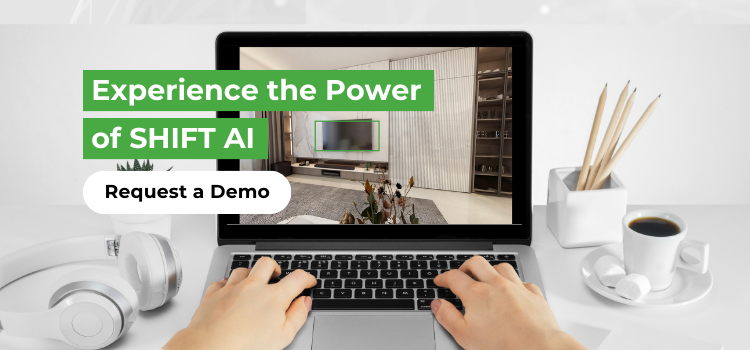It seems like everyone's using AI to create eLearning courses these days, doesn’t it? It's easy to get caught up in the excitement and think of AI as a silver bullet for all your training challenges.
But here's the real talk: AI isn't a magic solution. While it’s transforming the way we build courses, there's a real risk of becoming too dependent on this technology. This overreliance can lead to a drop in the quality of your courses—something you definitely want to avoid.
It seems like everyone's using AI to create eLearning courses these days, doesn’t it? It's easy to get caught up in the excitement and think of AI as a silver bullet for all your training challenges. But here's the real talk: AI isn't a magic solution. While it’s transforming the way we build courses, there's a real risk of becoming too dependent on this technology. This overreliance can lead to a drop in the quality of your courses—something you definitely want to avoid.
Are you worried about falling into this trap? Are you curious about the common myths surrounding AI in eLearning?
You’re not alone. Many of us have been there, thinking AI can handle everything from A to Z without much oversight.
In this guide, we’re going to clear up those misconceptions and lay out the pitfalls you should avoid. More importantly, we'll show you how to sidestep these issues or fix them if they're already affecting your courses.
Let’s dive in and ensure that your use of AI is enhancing, not hindering, your training content.
1) Expecting AI to Do All the Work
Yes, it's true that many eLearning platforms now let you create an entire course automatically in just minutes, and that certainly speeds up and does about 90% of the work. But relying entirely on AI for eLearning course creation without human intervention or supervision is one of the biggest mistakes you can make.
The strength of AI lies in its processing power, but it’s not foolproof. Simply put, if you feed AI poor-quality data, it will produce poor-quality results.
The principle of "garbage in, garbage out" holds very true here. Therefore, it's essential to perform some crucial checks and balances before you let AI do its thing.
Here’s what this means in practice: your eLearning content needs to be managed by a team of experts before it ever reaches the AI’s “hands.” This involves careful preparation and meticulous data curation. By ensuring that only high-quality, well-organized data is input into the AI, you safeguard the integrity and relevance of your course materials.
Recommended Actions:
-
Set Clear Objectives: Define clear objectives for what you expect from your AI tools. This clarity will help guide the data preparation phase and ensure that the AI's output aligns with your educational goals.
-
Review and Refine: Before you engage your AI tools, have your team thoroughly review and refine the data. This includes checking for accuracy, relevance, and completeness.
-
Utilize AI for Augmentation, Not Just Automation: Instead of using AI solely for automating processes, use it to augment human capabilities. For example, AI can suggest content enhancements or flag areas where human intervention might be necessary, thus enriching the overall course quality.
Also read: Integrating AI and the Human Element in eLearning Course Design
2) Not Properly Assessing the Quality of AI-Generated Content
In the fast-paced world of eLearning, we all want to create courses quickly. However, it's crucial to remember that quality trumps speed every time.
As AI-based tools become more prevalent in eLearning, it's tempting to let them do all the heavy lifting. But here’s the catch: failing to properly check the quality of what AI produces can lead to significant setbacks.
Imagine this: your AI tool whips up a complete course in just minutes. It sounds perfect, right? But if you don't take the time to thoroughly check this content, you could end up with a course full of inaccuracies and shallow information—more of a nightmare than a dream.
Here are some examples of why skipping this step is crucial:
-
Factual Errors: AI might create content that looks good on the surface but has factual mistakes. For example, a history course could end up with the wrong dates or events linked to incorrect figures. These errors can easily slip through without a meticulous review, leading to confusion among learners.
-
Lack of Depth: AI-generated content can be overly simplistic. Consider a biology course that skims over the basics of photosynthesis but misses out on explaining the vital chemical reactions involved. Learners deserve deep, well-rounded content to truly grasp complex subjects.
-
Relevance Issues: Sometimes, AI might produce content that doesn’t quite fit your course's goals. For instance, in a programming course, it might include examples in a programming language that your students aren’t studying. Ensuring content relevance is essential for effective learning.
Recommended Actions:
To avoid these issues, it's crucial to implement a thorough review process. Here are some steps to follow:
-
Expert Review: Set up a dedicated team of subject matter experts to scrutinize AI-generated content. These specialists should fact-check, assess depth and relevance, and correct any language errors.
-
Pilot Testing: Before rolling out the course widely, run pilot tests with a small group of students. Their feedback on clarity, accuracy, and engagement can provide critical insights. Use this feedback to refine and improve the content.
-
Routine Quality Checks: Don’t just check quality at the end of the course development process. Implement regular checks throughout to catch and correct issues as they arise.
-
Ongoing Review: Keep the evaluation process active even after the course goes live. Establish a system where students can flag any issues or suggest improvements. Regular updates based on this feedback can help maintain the course's relevance and high standards.
When you follow these steps in your development process, you make sure your AI-enhanced courses are quick to put together, but also really good and helpful for learners. This way, you get the best of both worlds—speed and quality.
Also read: Golden Rules for Using AI to Supercharge E-Learning Content Development
3) Ignoring Personalization
Let’s think about personalization in eLearning not just as tweaking a template, but as infusing your courses with unique, specific elements that AI alone can't know or predict.
Personalization means enriching AI-generated content with details that bring the learning experience closer to the real world of the learners. It involves integrating specific images that resonate with your audience, incorporating real-life examples that reflect their daily challenges, and weaving in stories that are familiar to the group, particularly those that have shaped your company’s culture or strategy.
When AI designs a course, it follows algorithms to produce content based on general data and patterns. While this is efficient, it lacks the nuanced understanding of your learners' specific environments and histories. That's where human insight becomes indispensable. By personalizing content, you're doing more than just adjusting—it's about transforming generic AI outputs into something that feels tailor-made.
Why Detailed Personalization Matters:
-
Enhances Relevance: Adding images from your company's events or examples of internal projects makes the content immediately more relatable and grounded in the learners' everyday experiences.
-
Increases Engagement: When employees see familiar faces and stories, or tackle problems that are directly extracted from their work scenarios, they're more likely to connect with the material and pay attention.
-
Boosts Retention: Personal stories and company-specific examples are more memorable than generic content, helping learners retain information better because it's relevant to their own experiences.
Steps to Implement Effective Personalization:
-
Integrate Specific Visuals: Use photos from your company or stock images that closely represent your team's demographics and work environment. This visual customization helps learners feel a direct connection to the content.
-
Incorporate Real-Life Scenarios: Gather input from different departments to find out which situations they face often and which skills they need most. Use this information to create scenarios and examples that are directly applicable to their roles.
-
Weave in Key Company Stories: Every company has milestone moments that define its culture and values. Include these stories in your courses to reinforce corporate identity and values, and to provide real-world examples of how challenges were handled and successes achieved.
When you incorporate these strategies, your AI-generated content transforms from a standard, one-size-fits-all format into a personalized learning journey. This tailored approach mirrors the unique culture, values, and needs of your organization and its people, turning every course into a deeply resonant experience that speaks directly to the hearts and minds of your learners.
4) Not Integrating User Feedback
User feedback isn't just helpful—it's essential for refining eLearning courses. Without it, you might keep making the same errors and fail to meet your learners' needs.
Think of it this way: simply churning out courses without following up is like cooking a meal without ever tasting it. How will you know if it's good?
What if your learners find the course confusing or lacking crucial information? Regular feedback is key to understanding their experience and ensuring the course hits the mark.
Collecting user feedback involves more than just listening; it means actively seeking out learners' opinions, comments, and suggestions. You can gather this feedback through various channels like surveys, questionnaires, post-course assessments, discussion forums, and direct feedback sessions. This input is invaluable—it tells you what's working, what's not, and how you can improve.
Recommended Actions for Effective Feedback Integration:
-
Set Up Regular Feedback Channels: Implement tools and processes to collect feedback consistently. This could include surveys at the end of each module or direct feedback tools embedded within the course.
-
Facilitate Discussion Forums: Create spaces where learners can freely share their thoughts and interact with each other. This not only provides you with insights but also encourages peer-to-peer learning.
-
Analyze Feedback for Actionable Insights: Don’t just collect feedback—analyze it to find patterns and common issues. This analysis will guide your course adjustments and ensure they are focused and effective.
-
Iterate Based on Feedback: Use the feedback to continuously update and improve your courses. This iterative process keeps your content fresh and aligned with learners' evolving needs.
Creating a robust feedback system elevates the quality of your courses, making them more effective and enhancing learner satisfaction and success. This solid foundation ensures that every training experience is not just delivered but refined and celebrated for its impact.
5) Failing to Train Your Team
Artificial intelligence (AI) and machine learning are transforming eLearning, but these tools don't eliminate the need for a well-trained human team. Your team is critical for fine-tuning, adjusting, and maximizing the effectiveness of AI-generated content. However, many organizations struggle to fully leverage these technologies due to several common mistakes in how they train and support their teams.
Common Training Mistakes:
-
Underestimating the Need for Ongoing Education: Often, companies provide initial training when a new tool is introduced but fail to continue the education as the technology evolves. For example, a team might receive basic training on an AI platform but not get updated courses as new features are released or as better practices are developed.
-
Inadequate Resources: Some organizations might recognize the need for training but allocate insufficient resources to it. This can mean not enough time is set aside for learning, or budgets for training tools and external courses are limited. As a result, team members might only have superficial knowledge that doesn’t allow them to use AI tools to their full potential.
-
Lack of Practical Application: Training sessions are often too theoretical, with a focus on what AI can do in abstract terms rather than on hands-on, practical applications. Without the opportunity to apply new skills in real-world scenarios, employees may not fully understand how to integrate AI effectively into their daily tasks.
-
Ignoring Cross-Disciplinary Training: AI and machine learning aren't just for tech teams. Their benefits and uses span across various departments, including content design, quality assurance, and project management. Companies sometimes overlook the need to train a broader range of employees, which limits the innovative application of AI across the organization.
-
Neglecting to Build a Learning Culture: Perhaps the most pervasive issue is the absence of a learning culture. In environments where time pressures and immediate results are prioritized over long-term skill development, employees may feel discouraged from spending time on learning and exploration.
Recommended Actions for Team Training:
-
Invest in Comprehensive Training Programs: Develop a robust training program that includes both initial and ongoing education to keep pace with technological advances. Ensure that the training covers not only the use of AI tools but also strategic insights on how they can enhance eLearning course development.
-
Allocate Adequate Resources: Ensure that your training initiatives are well-supported with the necessary time, budget, and tools. Consider investing in partnerships with AI technology providers for specialized training resources.
-
Foster a Culture of Continuous Learning: Cultivate an environment where ongoing learning and curiosity are valued. Encourage team members to explore new tools, share their learnings, and integrate new knowledge into their work processes.
Also read: 3 Ways to Leverage Artificial Intelligence for Rapid eLearning Course Creation
6) Overlooking Human Creativity
A critical oversight in the realm of eLearning course development is underestimating the importance of human creativity. Often, organizations rely too heavily on AI to develop and manage all course content, forgetting that, while AI is efficient at processing data and generating basic material, it lacks the capability to infuse creative elements that truly engage and motivate learners.
Brainstorming and creativity sessions play a pivotal role in injecting courses with innovative teaching strategies, relevant scenarios, and engaging content that resonates with learners on a deeper level. For example, during these sessions, a team might devise a unique way to present complex information through storytelling or interactive simulations, which AI alone wouldn't conceive. These human-led strategies ensure that the course content connects with learners more effectively, fostering deeper understanding and retention.
Moreover, strategic brainstorming allows teams to align the course objectives with broader learning goals and learner outcomes. This alignment is crucial because it ensures that every element of the course serves a purpose and contributes to a coherent learning journey. Without this layer of human strategy, courses might become a collection of disjointed facts, lacking a narrative flow or a clear path to skill mastery.
Recommended Action: To avoid falling into this mistake, it's essential to maintain a balance between the automation that AI offers and human creative intervention. Use AI to handle repetitive and high-volume tasks, but ensure your content development team is actively involved in the course creation process. Encourage your team to participate in brainstorming sessions, contribute contextual examples, and design activities that promote a dynamic and engaging learning experience.
Creating content with AI offers tremendous potential to revolutionize online training, but its success depends on conscious and proper use.
Are you truly maximizing AI capabilities without sacrificing content quality and human creativity?
Reflect on how you are integrating these tools into your educational process. Avoiding common mistakes like lack of personalization and overlooking user feedback is crucial to ensure your courses are not only effective but also engaging and enriching.
We invite you to try our AI-enhanced eLearning tool, designed to accelerate course creation.








